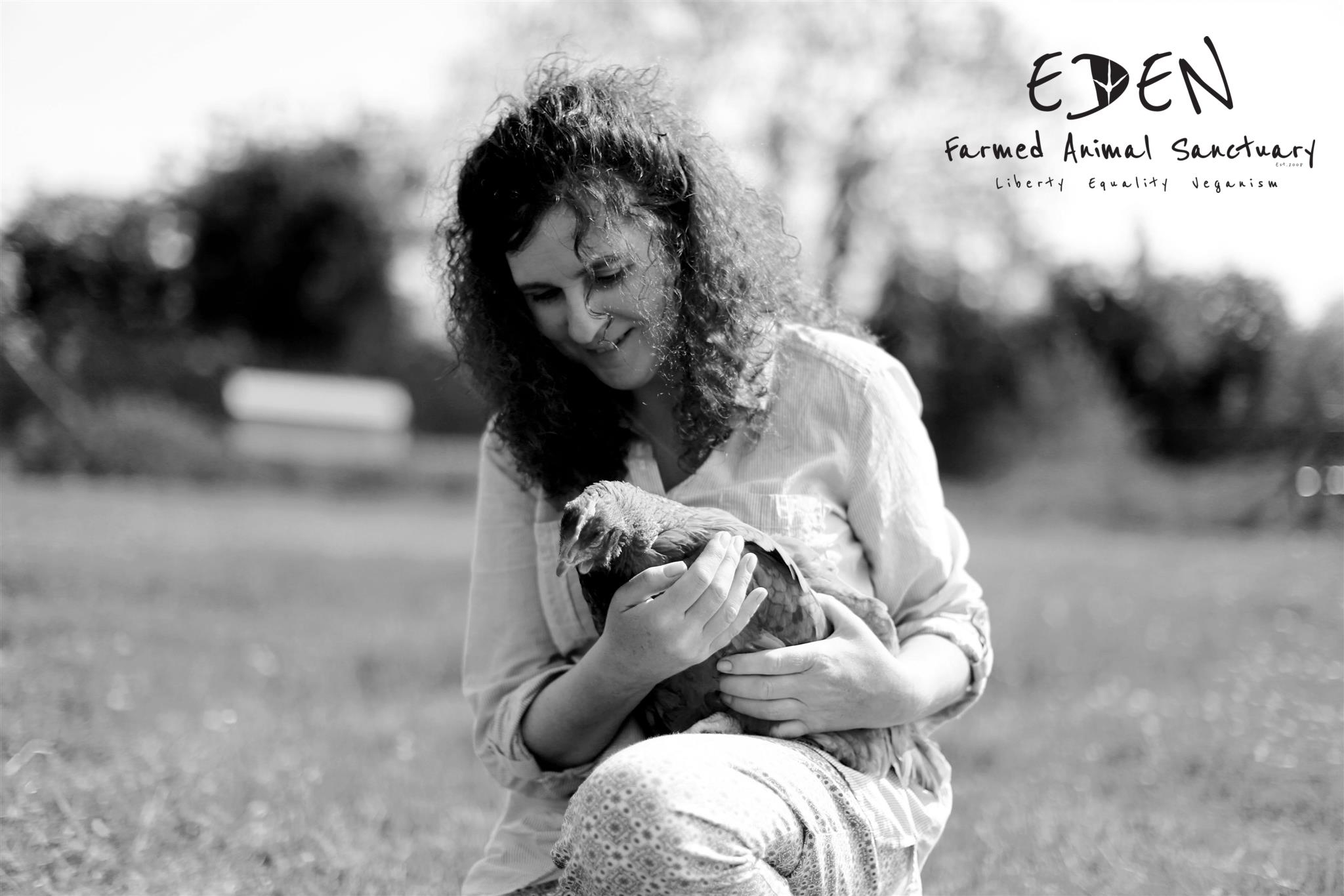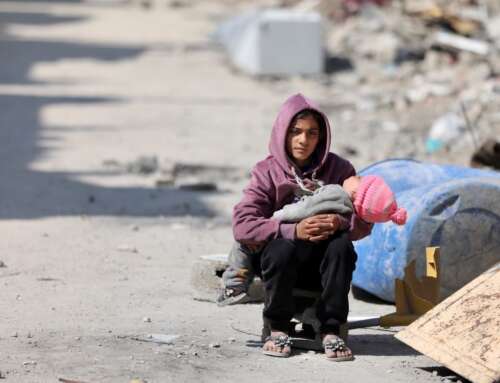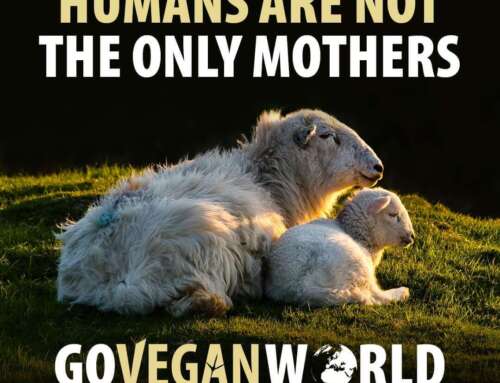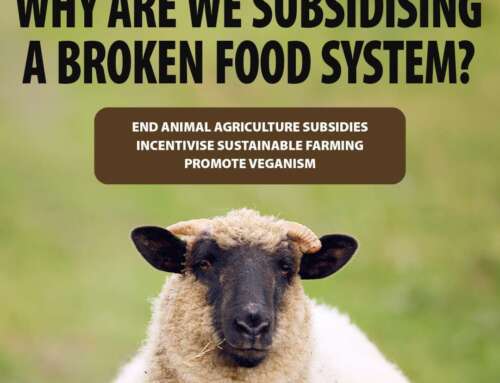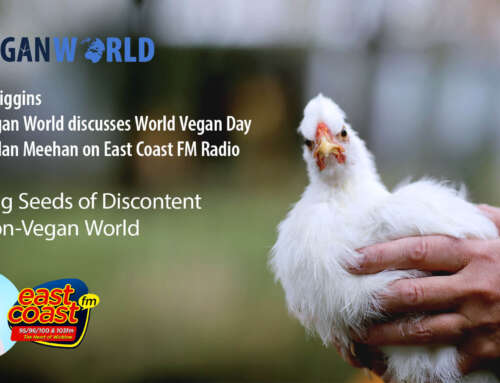The Psychology of Becoming Vegan
Sandra Higgins, BSc (Hons) Psych, MSc Couns Psych, MBPsS, Counselling Psychologist.
There is a misconception that going vegan involves incredible willpower and that on your first day as a vegan you will go shopping and have to make a superhuman effort not to put animal products into your basket. Nothing could be further from the truth. Being vegan has nothing to do with willpower. Vegans see animal products as someone else’s eggs, milk, flesh, fur, skin and feathers. We are not tempted to use them. We do not crave their taste or feel. We find their presence abhorrent because we are reminded of who they were and what they endured for products that we do not need.
Indeed, veganism is not about shopping or consumerism at all. It is a radically new way of thinking and feeling about other animals and those thoughts and feelings guide our behaviour.
The misconception about veganism arises from inaccurate portrayal of it as a diet or lifestyle. Before anyone can live or behave as a vegan, they need to know why other animals need us to be vegan.
Let us first define veganism: it is the recognition of the fact that other animals can feel and value their lives and it is a way of living that respects their fundamental right not to be owned, used or killed. Vegans avoid, insofar as is practicable, all animal use for food, clothing, labour, entertainment, research or any other use and we recognise and work to end the intersectional consequences of animal use such as human health issues, species extinction, loss of biodiversity, environmental destruction, climate change, violation of workers rights in animal use industries etc.
The difference between vegans and non vegans, or those who eat a plant diet, is that vegans think about other animals and the injustice of using them and we boycott it because it is wrong. Non vegans do not consciously consider the injustice of using other animals and they prioritise taste, convenience and habit over the lives of other animals and they are enabled to do so because they categorise them as if there was a difference between companion animals such as dogs and cats, and farmed animals such as cows, sheep, chickens, pigs and fishes. Indeed, they categorise other animals as if there was a difference between human animals and non human animals when in all the ways that matter there is no difference that justifies what we do to them.
Unsurprisingly, many people consider going vegan in January. The start of a New Year prompts us to make resolutions to eliminate aspects of our lives that are not serving us well and to adopt others that would benefit us. Many people have been thinking about veganism for a while and now feel ready to make the behavioural changes necessary to begin living vegan. But there is a problem. Veganism is frequently advertised as a lifestyle that we can dip in and out of. Something we can try on and discard like a coat. Before anyone can be vegan they need to go through the necessary psychological processes of behavioural change. These processes are not limited to behaviour. Processing our thoughts and feelings are essential components before behavioural change can occur with any hope of lasting.
Once we have the smallest glimmer of the impetus to be vegan, there are three stages to becoming vegan:
- Knowledge or Awareness
- Motivation & Preparation for Change
- Practical aspects of living vegan
These stages are common to all behavioural change.
In essence, going vegan does not begin at the supermarket. It begins when we learn information that counters the social norm and forces us to think about the injustice of using other animals. Veganism begins when we change how we think and feel about other animals. Once our thoughts and feelings change, behavioural change is very easy.
Stage I: Knowledge & Awareness
Learning about Animal Use
We are all aware that other animals are killed for us when we are not vegan. We see them alive in fields and on farms. We see them used in advertising. We encounter them second hand through our childrens’ books and films. We see truck fulls of them in every town, village and city as they are transported to their deaths. So, while the ways in which we harm them and the violence of their deaths might not be known to us, the fact that living beings are killed for us is something we are all aware of. There are many reasons why we continue to create a demand for them to be killed. We grow up in speciesist cultures that teach us that breeding animals to kill them is normal and necessary. The industries that profit from us keep their sentience and the harm we inflict on them hidden. Any discomfort we feel is carefully kept in our subconscious. So while it is something we are aware of, it is not something we take out of our subconscious and rationally examine.
This first stage of change involves the deeply painful process of taking these facts out of our subconscious and consciously examining the many ways in which our seemingly innocuous ways of living inflict violence on other animals that is the stuff of our worst nightmares. This stage often occurs when we are reminded of the fact that other animals can feel and that the value their lives and don’t want to die. Or it might occur when we discover some new fact of standard animal use, such as separating mothers and calves for dairy, or learning about what other animals endure in the clothing industry. Learning about these facts can prompt us to consider the injustice of animal use and to research further. The facts of standard, legal practice in the animal use industries are shocking.
This stage of change frequently involves feeling as though the ground has been taken from under our feet. Everything we formerly believed about this world being a benign and safe place is shaken. Our trust in those in positions of trust and authority is shattered when we discover the standard, legal practices that they condone in the animal use industries and we learn that their capacity to care about justice is, at best, selfishly confined to members of their own species. When we come to realise the degree of violence that is routinely inflicted on innocent and defenceless animals and we face up to the fact that every non vegan product and practice we pay for supports them being bred into a short, tormented life with a death sentence on their young heads, our very sense of who we are is deeply shaken. This stage of going vegan means confronting our own speciesism head on by thinking about how we discriminate against others and justify our exploitation of them simply because they are not human. Most of us would have always been vegan if we had full knowledge and awareness of the consequences for other animals when we are not vegan. Most of us wish that this information had been widely available and presented to us years ago so that we could have changed at an earlier stage. It is understandable that these thoughts, recriminations, new ways of perceiving the world, and feelings such as grief, shock, guilt, betrayal and anger are difficult psychological issues to process. In order to be vegan this stage is imperative.
Stage 2: Motivation & Preparation
Making the decision to stop exploiting other animals
Once we gain sufficient knowledge and awareness at Stage 1, we move to Stage 2 where we are motivated to change and we prepare to eliminate all animal use from our lives. This simply means that having realised the consequences of our non-vegan actions for other lives we decide to stop harming them. Of all the aspects and stages of transitioning from non-vegan to vegan, this is the most important. This is the point at which we decide that all animal use is unjust and that our taste, profit, convenience, social discomfort, tradition, or culture are not sufficient reasons to justify our continued use of them. This is the point at which we mentally undo the damage of having grown up in speciest cultures that objectify other animals and teach us to use them as commodities or ingredients instead of respecting them as beings who feel and value life just as we do.
For some people the time lapse between Stage 1 and Stage 2 is very short. It is difficult, if not impossible, to accept responsibility for our role in their oppression and continue to be complicit in the violence that is routinely inflicted on them for the most trivial of reasons by paying for something that is not vegan. Once we realise the train of actions that unfold when we open our wallets to fund animal use, thereby creating a demand for injustice, violence and death, we also realise our power in boycotting animal use by refusing to use anything that is not vegan. For others, there is a longer process of coming to realise the multitude of ways in which we harm others and of researching how to replace violent choices with vegan alternatives. For example, some people eliminate all animal foods from their lives, but it takes a while longer to replace clothing and cosmetics with vegan friendly alternatives. However, once we face the fact that animal use is violent, unnecessary and unacceptable, the decision to be vegan and the process eliminating animal use should not take more than a few weeks. When we think of our personal process of going vegan in terms of the real, living, feeling beings who we torment and send to their deaths until we go vegan, the time it takes to be vegan is significantly shorter than it is for someone who thinks that going vegan is part of their own long and winding self-development journey.
Most people begin Stage 2 with learning how our use of other animals as food constitutes violent rights violations and learning to replace animal flesh, including fish flesh, dairy, eggs, honey and additives with plant alternatives. Sometimes all it takes is learning something about a single aspect of animal use such as the separation of mothers and calves by the dairy industry, or the killing of day old chicks by the egg industry for someone to not only vow to replace dairy and eggs in their diet with plant alternatives, but use this information to examine the other ways in which we unjustly use other animals and how we can omit them from our lives. Over 90% of the animals bred and killed by humans are used as human food. Therefore, the dietary aspects of veganism are the most important to address. The second issue to tackle is replacing clothing, furniture, cosmetics and cleaning products next time you make a new purchase. It is easier to replace your shower gel with a vegan friendly alternative than it is to change all your clothing or footwear, or your leather sofa. Be practical. The most important thing is that you have made the decision that your future purchases will be vegan.
In order to be vegan we have to face a very dark side of our human nature. We have to embrace and accept responsibility for the fact that our non-vegan harmed and killed thousands of defenceless animals in order for us to reject violence and live vegan. This is a painful and difficult thing to face up to. Many people lack the courage to do so and rather than confront a part of our identity that makes us uncomfortable and focus our attention on our victims, many people flee from fact and immerse themselves instead in the frivolity of consumerism. But veganism is not a consumerist issue; it is a social justice issue and must remain so. While it is unnecessary to retraumatise ourselves by looking at disturbing footage and facts of animal use once we are already aware of them, it is essential that our focus stays on the victims of our use. The facts of animal use in animal agriculture for food and clothing are no longer hidden. There is also a lot of reliable evidence on the use of other animals for research and entertainment. Every sordid, sickening detail of what we put them through to meet the most trivial of our whims is accessible from the facts in the scientific literature to the evidence in undercover investigations that document the standard, legal practice of animal use. There is no need to learn about the horrific breaches in animal welfare legislation. All we need to know is that every animal use violates their rights to live free from harm, free from oppression by another species, and their right to life.
Because we grow up in speciesist cultures where the commodification and killing of other animals is normalised, it can be difficult initially to extricate ourselves from a mentality of imagining that there is a more humane way to do this. That is why some people get stuck at thinking in terms of improved animal welfare. But it is important to know that animal welfare is an industry term that refers to the legal, standard practice of selectively breeding, owning, commodifying, exploiting, and killing sentient animals. The root of what is wrong is not how we treat them, but the fact that we use and own them. There is no humane way to use other animals and even if there were, it would still be unjust to own them, treat them as commodities or ingredients, and kill them.
Stage two is often helped by researching or joining like-minded people in groups in our local towns, cities and on social media. There are some suggestions at the end of this article.
There is a growing body of scientific evidence on animal sentience and the myth of human superiority that helps undo the speciesist myths that we have all grown up with: myths that led us to believe that humans are the only individuals who matter by virtue of their species membership. Similarly, there is wealth of information on how to meet our nutritional needs through a plant diet; how children can be vegan; the variety of alternatives to the use of other animals for entertainment and labour, and advances in non-animal based research. There are also many sources of help to learn how to read labels on food, clothing, personal care, cosmetic and cleaning products so that we can avoid animal products and animal use.
Stage 2 often also involves becoming aware of some of the intersectional aspects of animal use such as the harm caused to human employees by industries that use other animals, the environmental impact of animal use, and the health benefits of a plant diet. It is important to distinguish between the secondary benefits of veganism (e.g. prevention of illness) and the reason for veganism. Human health and environmental protection are not sufficient reasons for living vegan. The rights of other sentient animals is the only necessary reason for going vegan. However, learning about these intersectional aspects of veganism have the added benefits of reassuring us that far from feeling deprived and disadvantaged as vegans, there are many benefits that impact us directly. Understanding the intersectional element of animal rights helps us understand veganism as an important social justice issue and not a restrictive or faddy diet. Even if these intersectional factors were not present, veganism for animal rights is still necessary. It is the very least we can do if we respect life.
Stage 3: The Practice of Living Vegan
The final stage involves using the information gained in Stages 1 and 2 that change how we think and feel about ourselves in relation to other animals, and the preparation we have done on how to be vegan, so that we practice living as vegans in our daily lives. The more effort we have put into the first two stages, the easier this stage will be. It simply involves using the information we have learned to direct our behaviour so that we eliminate all animal use and replace it with non-violent alternatives.
This stage often initially involves some trial and error until you find recipes that work for you, your favourite plant milk or cheese, and you replace your non-vegan clothes, personal care and cleaning products with non-violent alternatives. It involves initially learning how to read labels when you shop, and how to research whether or not your choices are vegan. There are many apps as well as vegan guides, lists and websites that can assist in these consumer choices. Many people find it helpful to research guides that pertain to their local area.
But there is more to this stage than how we eat, dress and entertain ourselves. Living vegan involves realising our place on this earth as one of countless individuals of the billions of other species with whom we share this earth. It involves learning about the complexity of their minds and lives. It involves a radical change in how we relate to them and to the non-vegan world we live in. The most challenging aspect of this stage is negotiating relationships with non-vegan family, friends, and work colleagues. I won’t pretend that this is easy; it is an inevitable consequence of the doing the right thing in a world where violence is considered normal and acceptable if it serves the greater purpose of catering for human whims of taste and profit. However, this difficult aspect of being vegan can be helped if you have the support of like-minded vegans and if you keep in mind that you were once non-vegan yourself. There are also many helpful ways of dealing with difficulties such as socialising with non-vegan friends. If they are friends worth having they will be more than willing to meet you at events that do not involve the use of animals. They will also be interested in hearing why you are vegan. Many people cope with family events by meeting up once the non-vegan meal is over. Some people are happy to eat a vegan meal in the presence of those eating animal foods and if this is tolerable to you, then you can use the opportunity to engage in vegan education by showing people the variety of tasty food that vegans eat.
Maintaining Behavioural Change: Staying Vegan
A few years ago many people could not even pronounce the word vegan. It was regarded as an extreme belief and people held a caricature view of vegans as hippies. Now it has become mainstream and the science on human nutrition and health as well as the very serious and urgent need to address species extinction, loss of biodiversity and climate change means that the animal rights movement has even more weight than when our remit was animal rights.
Being vegan means that you are living in ways that honour animal rights as the most important social justice issue of our time. Living vegan means that you are part of the necessary evolution of humans from violent and unjust to peaceful and fair. A quick fix just won’t cut it. Before you can live vegan, it is necessary to learn why you need to be vegan. Only then can you make the transition one that honours the seriousness of the cause and lasts your lifetime.
Useful links
South Florida Vegan Education Group
International Vegan Association
There’s An Elephant in the Room

